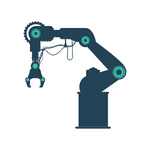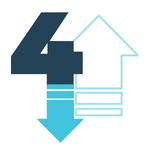
CONTENTS

Introduction to AIG

What Is AIG?

How It Works

Who Can Use AIG?

The Value of AIG

The Security Benefits of AIG

Four Ways AIG Saves Time and Money

Methods of Item Pool Expansion

Implementing AIG

Talking to Your Team
Too many tabs open?
We’ve been there. Enter your email to get a permanent copy of this guide sent directly to your inbox.
Introduction

Many of the negative effects of cheating and content theft can be mitigated by a large enough item bank.
But until recently, physical and economic limitations have made it difficult to rapidly expand an item pool.
Dedicating item writers and subject matter experts (SMEs) to the arduous task of expanding your item pool can be expensive and time-consuming.
AIG transforms this process.
Because up until now, testing professionals have always had to manually and painstakingly perform the fundamental task of item writing—there has been no way to easily and rapidly expand an item pool while also maintaining its psychometric quality.
As a result, test programs pour time and money into item development… and then redevelopment.
Is there an easier way?
AIG has been around for a while. However, pumping out items using typical methods of item design hasn’t exactly been useful or attainable for most of us, either. AIG still required the skills of a developer to pull off.
That gets costly.
Luckily, new ways of designing items are making it easier than ever to rapidly expand item pools at a reduced cost—no developer required.
But how does AIG work? What are the benefits? How does a program even get started?
We’ll explore these questions and more in this Ultimate Guide.
What Is AIG?
Automated Item Generation (AIG) is a process that leverages test item templates and computer algorithms to quickly create a large variety of item permutations, or test items. The result is hundreds or thousands of new test questions based on one single item model.
As the name suggests, AIG automates much of the effort involved in item creation—which is one the most time-intensive and costly aspects of test development. Using computer technology, AIG generates large numbers of high-quality test items automatically. (Welcome to the future.)
Utilizing AIG helps to maintain and improve test quality in a world where online braindumps and content sharing platforms disclose test content and threaten the validity of exam scores. With AIG, stolen test questions can be replaced quickly, and the damage that shared test content can inflict on assessment programs is palliated.
“AIG involves leveraging the expertise of content specialists, item templates, and computer algorithms to create a variety of item permutations, often resulting in hundreds or thousands of new items based on a single item model.”
—European Medical Journal

How It Works
1. Template Build

2. Data Dump

3. Generation

4. Review and Testing

5. Import

Who Can Use AIG?
AIG is for all.
Here’s what AIG can do for your program:
Certification and Licensure
K-12 Testing
Distill the content of your K-12 exams into expansive item pools to deploy more forms, thereby making it more difficult for gossip to contribute to useful pre-knowledge.
International
Higher Education
The Value of AIG

Security

Savings

Speed
Some AIG tools can transform one item into 1,000 at the click of a button. Nobody can write that fast.

Accuracy

Creativity

Popularity
The Security Benefits of AIG
Limit Item Exposure
Stay Ahead
Block Preknowledge
Use Fewer Humans
Get Adaptive
Secure test designs such as CATs (Computerized Adaptive Tests), multiple forms, & LOFTs require large item banks. AIG makes bank expansion accessible.



4 Ways AIG Saves Time and Money
Reducing Development Costs
Reducing Redevelopment Costs
Increasing Productivity
Increasing Item Pool Longevity
Methods of Item Pool Expansion
Writing Tons of Items
One way to expand an item pool is to manually write lots of items. This method is nice because SMEs are highly involved, but the cost and the duration of the project can quickly add up.

Theory-Based Expansion

Designing with a GUI

Skill-Based Item Generation

Getting Started with AIG

1. Research Options
What method of AIG do you plan to use? What tools can integrate with your existing systems?
2. Test Drive
3. Integration
4. Training
5. Build Templates
Whether you plan to use a GUI interface, cloning, SmartItem™ technology, or some other solution, high-quality templates are a must.
6. Generate Items
7. Make it Happen
Whether they’re developed and sent to you, or rendered into an uploadable file, you can now enjoy all of the benefits of your plentiful new items.
Talking to Your Team

You may be wondering, "How can I get my team to adopt AIG?"
“If exam security is our priority, then we need to expand our item pool.”
“I believe this is an opportunity to save on overall costs.”
“Our item writers deserve new tools.”
Want to take a copy of the guide to-go?
You don’t need a disposable lid, bag, or box. Just download here.
Check out Other Test Security Resources

Security Boot Camp Part 1: Preparedness

Security Boot Camp Part 2: Technology

Security Boot Camp Part 1: Preparedness

Security Boot Camp Part 2: Technology

Security Boot Camp Part 1: Preparedness

Security Boot Camp Part 2: Technology
Want to subscribe to our newsletter?